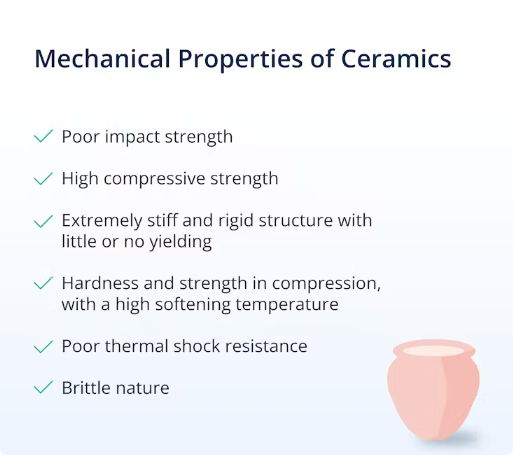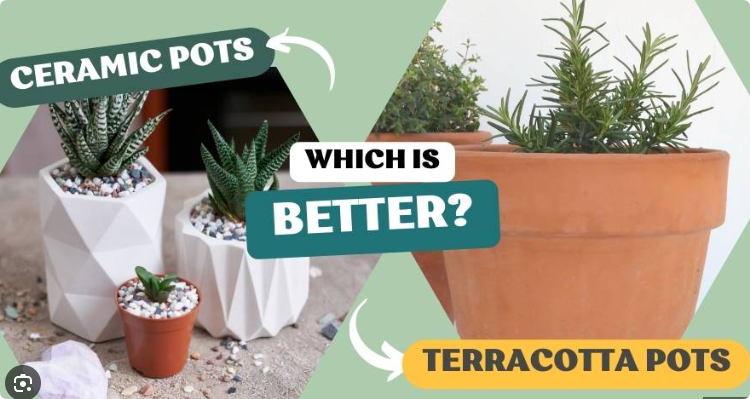Terracotta vs. Ceramic Pots Guide
When selecting plant pots for business, understanding the material composition and characteristics of ceramic pots is crucial. For B2B buyers, especially those managing ODM orders for supermarkets or OEM services for small-batch cross-border e-commerce sellers, this knowledge is a vital tool for making informed procurement decisions.
In this article, we’ll explore what ceramic plant pots are made of, their production process, and how they compare with terracotta pots, another popular choice in the market. By the end, you’ll have a clear understanding of which option is best for your business.
1. What Are Ceramic Plant Pots Made Of?
Ceramic plant pots are primarily composed of refined clay, along with minerals such as feldspar and quartz. These ingredients are mixed, molded, and then fired at high temperatures to create a hard, durable material.

Key Ingredients in Ceramic Pots
- Refined Clay: Forms the base, offering malleability during shaping.
- Feldspar and Quartz: Act as fluxes, reducing the firing temperature and enhancing durability.
- Glazes: Applied to the surface for aesthetic appeal and water resistance.
The combination of these materials results in a versatile pot that is both functional and decorative.
2. The Production Process
The production process for ceramic pots involves several steps:
- Clay Preparation: Clay is refined to remove impurities and mixed with other minerals.
- Shaping: The mixture is molded into desired shapes, either by hand or using machinery.
- Drying: The pots are air-dried to remove excess moisture.
- Firing: The pots are fired in kilns at temperatures ranging from 1000°C to 1300°C, creating a dense and durable product.
- Glazing: A layer of glaze is applied for aesthetics and waterproofing before a final firing.
3. Terracotta vs. Ceramic Pots: Material Composition and Production
While terracotta pots are also a type of ceramic, they differ significantly in material composition and production techniques.
| Feature | Terracotta Pots | Ceramic Pots |
|---|---|---|
| Material | Natural red clay, high in iron oxide | Refined clay with feldspar and quartz |
| Firing Temperature | Low (800°C–1000°C) | High (1000°C–1300°C) |
| Surface Finish | Porous, unglazed | Dense, glazed for water resistance |
| Aesthetic | Rustic, natural red tone | Versatile, available in various colors and finishes |
4. Functional Differences Between Terracotta and Ceramic Pots
| Characteristic | Terracotta Pots | Ceramic Pots |
|---|---|---|
| Breathability | Highly breathable; promotes root aeration | Less breathable; retains more moisture |
| Weight | Lighter, easier to move | Heavier, more stable for larger plants |
| Durability | Prone to cracking in freezing temperatures | More resistant to weather changes |
| Water Retention | Absorbs water, dries quickly | Retains moisture, ideal for tropical plants |
| Price | Generally lower cost | Higher cost, more premium |
Benefits of Terracotta vs Ceramic Pots for Plant Care
Key Insight:
- Terracotta pots are ideal for succulents and cacti due to their breathability and rustic charm.
- Ceramic pots are better suited for decorative purposes and water-loving plants, offering greater design flexibility and durability.

5. Design Flexibility and Customization
Terracotta Pots
- Typically available in earthy red or orange tones.
- Limited customization options, mainly in size and basic hand-carved patterns.
Ceramic Pots
- Offer a wide range of finishes, including glossy, matte, and textured glazes.
- Suitable for intricate designs, logos, and branding, making them ideal for ODM and OEM customization.
For businesses targeting high-end or niche markets, ceramic pots are more versatile and cater to a broader range of customer preferences.
6. Environmental Impact
- Terracotta Pots: Made from natural clay and fired at lower temperatures, they have a smaller carbon footprint but shorter lifespans.
- Ceramic Pots: Require more energy to produce but are more durable, reducing the need for frequent replacement.
Businesses aiming for sustainable solutions should consider the balance between production impact and product longevity.
7. Market Preferences and Use Cases
| Market/Use Case | Terracotta Pots | Ceramic Pots |
|---|---|---|
| Target Customers | Budget-conscious buyers, rustic designs | Premium buyers, modern aesthetics |
| Common Applications | Outdoor gardens, succulents, cacti | Indoor plants, tropical flowers, high-end decor |
| Regional Demand | Popular in Western rural and garden markets | High demand in Asia and urban luxury markets |
8. Final Recommendations for B2B Buyers
Choose Terracotta Pots If:
- Your target market values natural aesthetics and affordability.
- The pots will be used for plants requiring high drainage, such as cacti or succulents.
Choose Ceramic Pots If:
- Your target market demands premium products with diverse designs.
- The focus is on indoor or tropical plants requiring higher water retention.
Both materials have unique advantages, and the right choice depends on your market and customer preferences.
If you’re ready to take your planter business to the next level, reach out to Hale Planter today for consultation and bulk order opportunities.

